The International Maritime Organization (IMO) has set the goal of reducing the shipping industry’s greenhouse-gas emissions by at least 50% by 2050, and reducing the carbon intensity of emissions by 40% by 2030 and 70% by 2050, compared with 2008 levels. Shell recently commissioned a report into the feasibility and challenges of meeting these targets, and identified 12 possible solutions to attain these goals.
The report was based on over 80 surveys across the industry, consulting with CEOs, financiers and ship builders to draw its conclusions. According to Grahaeme Henderson, VP shipping and maritime at Shell, previous work in the safety arena provided a starting point: “In Shell Shipping & Maritime, a key focus area has been on improving safety across the industry. The aim is a zero-incident industry where every seafarer returns home safely. This has not been easy and there is more work to do, but huge progress has been made.
“To improve shipping’s safety performance, the industry had to first work together to understand the problem; what are the underlying factors that prevent us being safer? And then, armed with that information, take collective action. Our objective with this report is to do the same for decarbonization; we want to catalyze action by creating a common understanding of barriers the industry faces and the solutions that will be most effective.”
The report posits that there is a deadlock in the industry when it comes to decarbonization. Shipping is a capital-intensive industry characterized by large, long-life assets, thin margins and a high-dependence on a global supply of energy-dense fuels. These characteristics make decarbonization complex and expensive. Therefore, strong regulatory and market incentives, coupled with an abundant supply of low-emissions fuels and technology, will be key to any substantial shift.
While electric power is currently an option for short routes and small vessels, it is deep sea shipping that accounts for 85% of emissions. Currently, said Shell, there is no viable alternative fuel or propulsion technology that makes the IMO’s 2050 target achievable. Therefore, new technologies such as propulsion systems and storage tanks need to be developed to resolve these barriers and enough capacity is needed to meet the 3.3 petawatt hours (12 exajoules) annual energy demand from shipping.
The report found that leaders in the industry recognize this problem, with 90% of those interviewed viewing decarbonization as a top priority for their organizations. The general consensus was that it is too great a task for one organization to achieve alone, with big ideas needed that could be implemented on a small scale then rapidly expanded.
In order to create meaningful progress in the next five years, five solutions are suggested:
Scale-up customer demand: Create scale in demand for low- or zero-emission shipping through charterers’ and customers’ commitments that include long-term contracts and green procurement criteria. Natural candidates to lead this solution are state-owned and publicly listed companies with proximity to end consumers (e.g. containers, food bulk), and others with ambitious scope 2 and 3 net carbon footprint commitments.
2. Global regulatory alignment: Create a level playing field globally and reduce uncertainty regarding regulations and timeframes. New IMO guidelines due in 2023 should provide clarity and should be aligned with leading local and regional regulatory bodies (eg. the EU, China and the USA). Short-term regulatory incentives should also be considered.
3. Cross-sector research and development: Intensify partnerships to develop zero- or low-emission fuels through joint research and development (R&D) across shipping, other harder to abate sectors and the energy industry. Create a much larger pool of capital and expertise to evolve new technologies and increase the likelihood that production and transportation infrastructure will be available once future fuels are commercially viable.
4. Scale-up controlled pilot projects: Increase R&D effectiveness by running end-to-end green pilot projects involving customers, charterers, operators, owners and ports on specific routes and vessel types. Operators that follow a predetermined schedule, such as container ships especially on shorter and busier routes, are likely candidates for pilot projects.
5. Coordinated industry commitments: Increase the reach of existing initiatives – such as the Getting to Zero Coalition, the Clean Cargo Working Group and others – by consolidating objectives and strengthening the coordination of various concurrent workstreams. A body with a specific mandate, formed with dues from the industry, could accelerate the shift from ideas to action and help break the deadlock.



